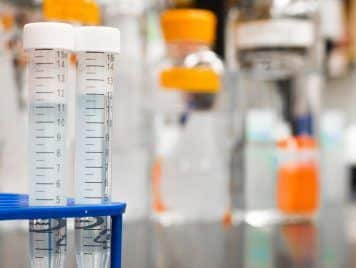Each year, it’s estimated that more than 50,000 deaths occur as a result of hazardous chemicals in the workplace. It's not just about keeping your environment clean or making sure you have new / up to date equipment. Ensuring the chemicals being used are stored and disposed of in a safe manner is also vital for any laboratory, and every effort must be made to ensure the safety of those working in it.
Countless regulations have been put in place over time to ensure safe storage and disposal of chemicals, both by government officials and by governing scientific bodies. Each lab will have their own set of rules too, and it’s vital that these are followed to the letter.
To help further understand the requirements for the safe storage and disposal of chemicals in a lab, we’ve put together the following guide.
How To Safely Store Chemicals
There are a lot of procedures you will want to consider if you are going to be storing chemical waste safely. You will need to know how hazardous the substances are, if you are dealing with any unknowns, and what the appropriate storage containers are going to be. The following are some vital points you should consider for safely storing chemical waste:
- Hazardous Substances: Different procedures will be put in place depending on how hazardous a chemical is, such as where it can be stored and what it can be stored in.
- Chemical Waste: If you’re storing chemical waste, designate an area for it that’s close to where the waste is generated, away from regular lab activity, and ensure it’s kept under supervision. Make sure the area is labeled with appropriate signage, and ensure it follows all protocols. If it’s liquid waste, make sure a sizable amount of space is left in the container (around 10%) in case of expansion, and keep liquid and solid waste separated.
- Appropriate Containers: Ensure you’re storing your chemicals in the appropriate containers. Many chemicals won’t be compatible with certain types of plastics; for example, solvents shouldn’t be stored in lightweight polyethylene containers, hydrofluoric acid shouldn’t be stored in glass, and acids shouldn’t be stored in metal. You should also ensure that any lids are kept tightly on containers at all times. Finally, some chemicals will need to be stored in a secondary container, to provide further protection against any leaks or spills.
- Labelling: Make sure every chemical container is adequately labeled, especially if they’re hazardous or flammable.
- Shelf Life: Always be mindful of any shelf lives your chemicals may have.
- Lab Positioning: Keep any hazardous chemicals in an area with a clear exit, and close to any washing facilities.
- Storage Cabinets: Use specially designed chemical storage cabinets. Polypropylene storage cabinets are a perfect metal-free, corrosion-proof, UV resistant solution for storing chemicals in a lab. Not only will their anti-rust protection against corrosive materials ensure they’re robust and long lasting, but they’re also easy to clean, bespoke and customisable. They are built with integrated sumps to help contain spillages. Chemically resistant, corrosion-proof lab furniture is also recommended.
Safely Disposing of Chemicals
Similarly, there are several safety protocols you will need to follow when it comes to disposing of chemicals safely. Disposing of chemicals in an improper way is illegal, as well as being extremely dangerous to yourself and others in your lab. Every chemical will have it’s own guidance on safe disposal, but in general, most can be disposed of in one of the following ways:
- Drain Disposal: Some chemicals can be safely washed down the drain and mised with plenty of water. This is the case for concentrated and diluted acids / alkalis, harmless soluble salts, hypochlorite solutions, alcohols containing salts, fine silica and alumina.
- Incineration: Chemicals which cannot be washed down the drain may instead need to be safely incinerated in a controlled environment. This includes all organic solvents, paraffin, mineral oil, and soluble organic waste.
- Controlled Waste: There will be some waste chemicals which are safe to dispose of in general waste through collection from your local authority. Make sure to check before placing any chemicals into general waste bins. Your lab should also have separate containers for items which are contaminated with chemicals.
- Red List: You should be aware of any chemicals in your lab which are on the Red List, these must be disposed of appropriately, and under no circumstances should be washed down the drain.



